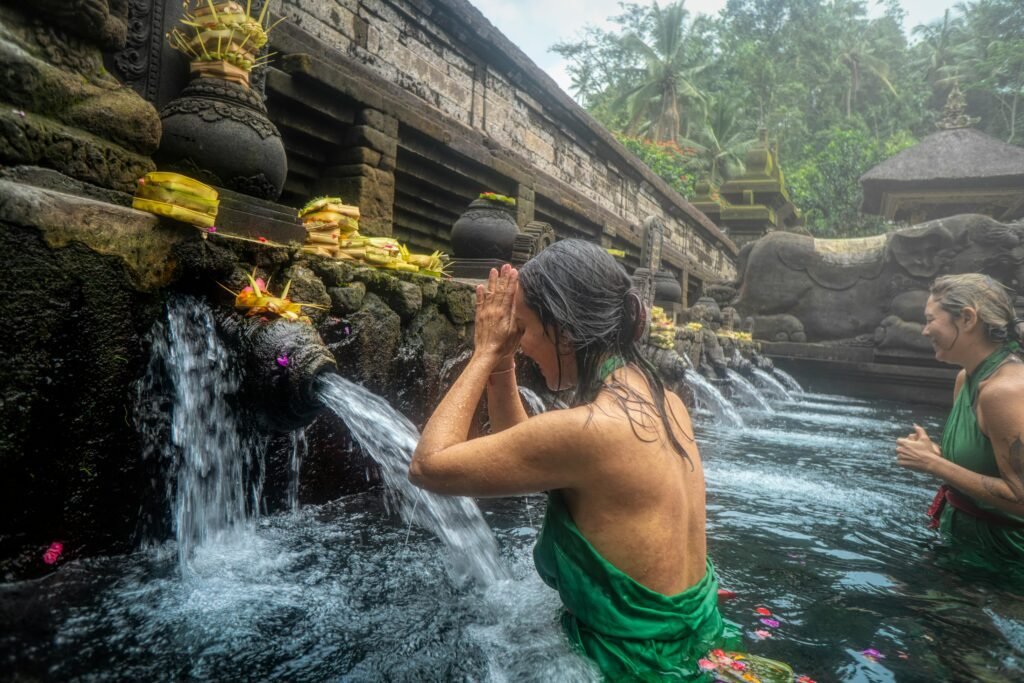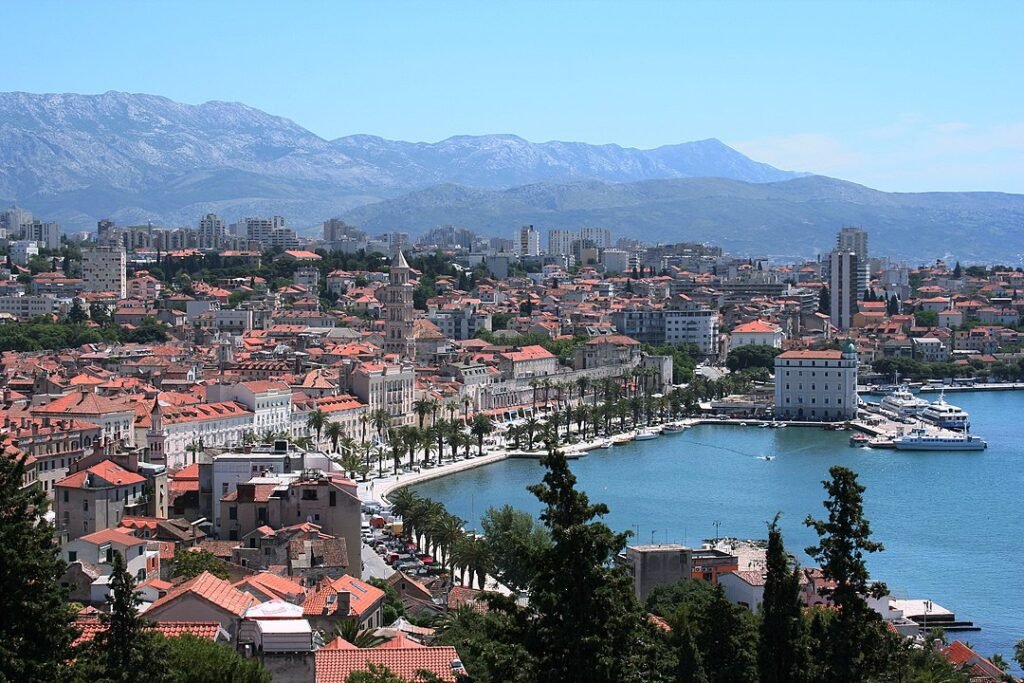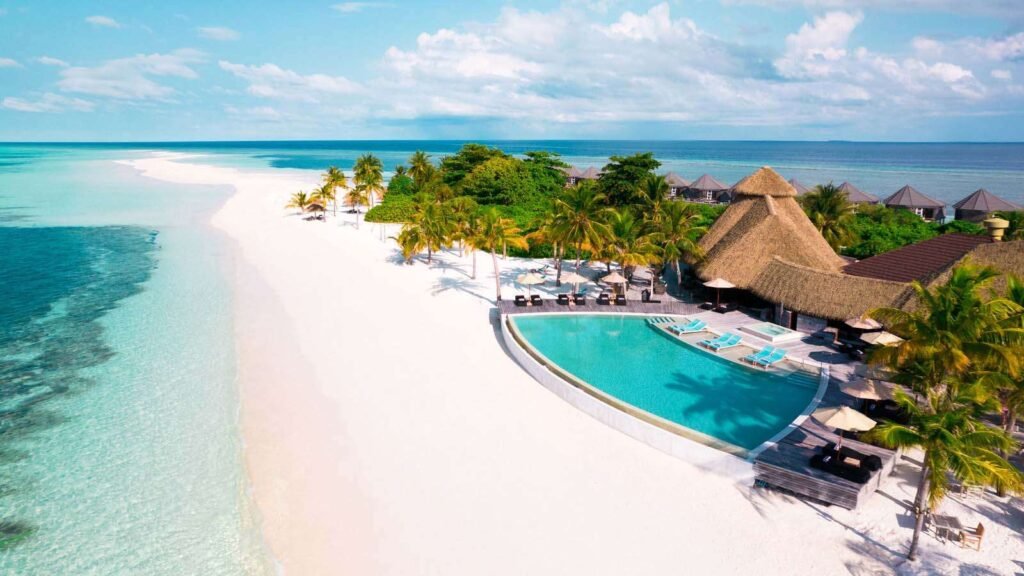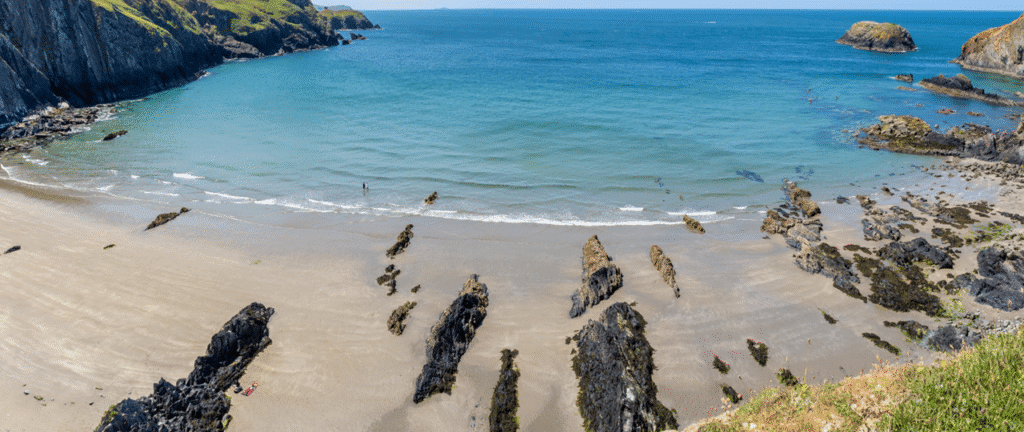
Introduction to Bali
Bali Travel Guide: Bali has a way of getting under your skin. One minute you’re watching surfers carve turquoise lines beneath Uluwatu’s clifftop temples; the next, you’re ankle‑deep in a rice terrace as dragonflies stitch the air and a gamelan shimmers in the distance. For UK travellers – families in need of winter sun, couples chasing a stylish retreat, solo adventurers on the lookout for culture and surf, Bali combines ease with escapism. This guide distils the island’s essentials into clear, real‑world advice, with sample itineraries, neighbourhood picks, culture tips, and practicalities from flights to temple etiquette.
A Quick Primer: What Makes Bali, Bali
Set amid Indonesia’s vast archipelago, Bali is the country’s Hindu heartland. The island’s daily rhythms, offerings on doorsteps, temple ceremonies, and processions beneath penjor (bamboo poles) are as compelling as its beaches. Landscapes run south to north from limestone cliffs and golden sands to the volcanic slopes of Mount Batur and quiet black‑sand coves around Amed. Culture is everywhere: shadow‑puppet theatre, kecak dance at sunset, batik workshops, traditional markets, and ritual life that outsiders are welcome to observe respectfully.
Headliners at a glance
- Temples & Heritage: Uluwatu (ocean cliffs), Tanah Lot (sunset icon), Besakih (the ‘Mother Temple’ on Mount Agung), Tirta Empul (holy water springs), Taman Ayun, and the UNESCO‑listed subak landscape around Jatiluwih.
- Nature & Adventure: Sunrise hikes on Mount Batur, rice‑field walking in Ubud and Sidemen, waterfalls like Tegenungan, Sekumpul and Gitgit, diving/snorkelling in Menjangan, Tulamben and Amed.
- Islands: Nusa Penida (dramatic cliffs), Nusa Lembongan (easy island vibes), Nusa Ceningan (tiny and photogenic); the Gilis off Lombok for add‑on chilling.
Key Facts & Figures for 2025
- Location & Time Zone: Bali, Indonesia (WITA, UTC+8).
- Peak & Shoulder Seasons: Dry season roughly May–October (sunny, lower humidity), wet season November–April (heavier showers, lusher landscapes). July–August and Christmas/Easter are the busiest.
- Electricity: 230V/50Hz, plug types C & F (European two‑pin). Carry a universal adaptor.
- Arriving: I Gusti Ngurah Rai International Airport (DPS), 20–40 minutes by road to Kuta/Seminyak (traffic dependent), ~60–90 minutes to Ubud.
- Visas: Many nationalities (including UK) use Visa on Arrival (VOA) for up to 30 days, extendable once; a pre‑arranged e‑VOA is available and speeds things up on arrival.
- Tourist Levy: International visitors pay a small Bali tourist levy (per person) that funds cultural and environmental programmes. Pay online before you travel or at the airport/harbour.
- UNESCO Spotlight: The Cultural Landscape of Bali (subak irrigation and water‑temple system) includes the spectacular rice terraces of Jatiluwih.
Good to know: UK driving licences aren’t valid on their own. If you plan to ride a scooter or drive a car, you must carry the appropriate International Driving Permit (and insurance). Helmets are mandatory on scooters.
How to Get There from the UK
As there are no regular non-stop flights from the UK to Bali, you will always need to make at least one connection. The most common routes involve a single stop via major hubs such as Doha, Dubai, Singapore, Kuala Lumpur, or Jakarta.
Typical one‑stop options
- Qatar Airways via Doha (DOH) from London or Manchester.
- Emirates via Dubai (DXB) from London Heathrow/Gatwick or other UK airports.
- Singapore Airlines via Changi (SIN) from London Heathrow or Manchester (smooth transfers, good for families).
- Malaysia Airlines via Kuala Lumpur (KUL); or connect via Jakarta and take a short domestic hop to DPS.
Flight time usually totals 17–20+ hours, including transit. If you’re travelling with young kids, consider a long daytime layover at Changi or Doha to decompress.
Where to Base Yourself: Neighbourhoods & Vibes
Seminyak & Petitenget – Stylish beach living. Boutique hotels, villa stays, design shops, and sunset restaurants. Great for couples who want a sociable scene and walkable dining.
Canggu – Hip cafés, surf breaks, and co‑working spots. Expect scooters, smoothie bowls and beach bars. Lively for solo travellers; families like the villa space, but roads can be busy.
Uluwatu & the Bukit – Clifftop hotels, white‑sand coves, iconic surf (Uluwatu, Padang Padang). Romantic stays with dramatic views; you’ll rely on transfers or scooters to get around.
Nusa Dua – Purpose‑built resort area with calm beaches, big‑name hotels, and manicured promenades. Excellent for families (kids’ clubs, pools, shallow water) and anyone seeking an easy resort base.
Sanur – Old‑school seaside charm and a flat beachfront promenade that’s ideal for buggies and wheelchairs. A favourite with families and relaxed travellers; handy for boats to the Nusa islands.
Ubud – Cultural heart. Rice terraces, art museums, yoga studios, cooking classes, craft villages. Superb for all travellers, especially couples and solo visitors interested in wellness and culture.
Sidemen – A slower‑paced valley of emerald paddies and small homestays or chic eco‑lodges. Think “Bali of 30 years ago” without the crowds; perfect for writers, walkers, and photographers.
Amed & Tulamben – Black‑sand bays, snorkelling and wreck diving (USAT Liberty). Laid‑back evenings, local warung dining, starry nights.
North‑west Bali – Pemuteran and Menjangan for coral reefs and quiet coves; Munduk for cooler air, coffee plantations and waterfalls.
Nusa Islands (Penida/Lembongan/Ceningan) – Easy island‑hopping: Penida’s cliffs and manta rays; Lembongan’s chilled beaches and mangroves; Ceningan’s photogenic bridge and blue lagoons.
Top Things to Do (and How Long They Take)
Temple Trio (half‑ to full‑day)
- Uluwatu: Late‑afternoon visit, clifftop trail, kecak fire dance at sunset (arrive early; monkeys about—secure your sunglasses!).
- Tanah Lot: Best at golden hour or dawn; combine with nearby rice terraces.
- Tirta Empul: Join the purification ritual respectfully (sarong provided; follow your guide’s instructions).
Rice Terraces (half‑day to full‑day)
- Tegallalang near Ubud (busy but photogenic).*
- Jatiluwih (quieter, UNESCO landscape; wonderful half‑day walk with gentle gradients).
Volcano Sunrise (8–10 hours round‑trip)
- Mount Batur: Pre‑dawn pick‑up, 1.5–2.5‑hour hike, sunrise at the crater rim, hot‑spring soak after. Arrange with a registered local guide.
Waterfalls (allow a day if visiting multiple)
- Tegenungan (easy access), Tukad Cepung (sun‑beam cave), Sekumpul (spectacular; involves steps and stream crossings). Wear proper footwear.
Snorkelling & Diving (half‑ to full‑day)
- Amed/Tulamben (shore dives, Liberty wreck), Menjangan (boat trip; excellent visibility), Nusa Penida (drift dives; experienced divers only). Always check currents and conditions locally.
Wellness Days
- Ubud’s spas and yoga studios range from drop‑in classes to multi‑day retreats. Book popular studios in advance during peak season.
Family Favourites
- Sanur cycle path (hire bikes/child seats), gentle snorkelling at Blue Lagoon (Padang Bai), Bali Bird Park or Bali Safari (animal encounters with conservation messaging), hands‑on batik or silver‑jewellery workshops around Ubud.
Practicalities: Transport, Money, Connectivity
Getting around
- Private driver (car + driver) is the most comfortable day‑to‑day option for families and couples; agree on a day rate and route in advance.
- Metered taxis: Bluebird is the most reliable brand; use the MyBluebird app or queue at official stands.
- Ride‑hailing: Grab and Gojek operate widely in urban areas. Note that some locations restrict pick‑ups, look for designated zones or walk a few minutes to the nearest permitted area.
- Scooters: Only if you’re confident, licensed (IDP required) and insured. Always wear a helmet and avoid riding after dark or in heavy rain.
Money
- Currency is Indonesian rupiah (IDR). Cards are widely accepted in tourist areas, but keep cash for markets, warungs, and rural stops. Use ATMs attached to banks; count notes carefully.
SIMs & Wi‑Fi
- Buy a local eSIM/physical SIM on arrival (passport registration required). Coverage is excellent across the south and Ubud; patchier in remote valleys and on boat crossings.
Power & Adapters
- Sockets are Type C/F at 230V. UK plugs need an adapter; most hotels provide universal sockets or adapters on request.
Respectful Travel & Island Etiquette
- Temple visits: Dress modestly (shoulders and knees covered). A sarong and sash are often required (usually available to rent/borrow). Do not enter inner sanctums unless invited.
- Offerings: Mind your step around canang sari (small palm‑leaf baskets) placed on the ground.
- Photography: Ask before photographing people or ceremonies. Drones are restricted and often banned at temples and crowded sites – check local rules.
- Environment: Reef‑safe sunscreen, refillable water bottles, no litter. Respect signage in protected areas; do not touch coral or feed wildlife.
- Behaviour: Public intoxication, aggressive behaviour, and disrespect at sacred sites are taken seriously and can result in fines or deportation. If in doubt, ask your guide.
Seasonal Events & When to Go
- Dry season (May–Oct) brings reliable sunshine – ideal for beaches, trekking, and visibility in the water. Peak months (Jul–Aug) are busier and costlier.
- Wet season (Nov–Apr) sees tropical downpours, greener landscapes, and fewer crowds. East‑coast surf can be excellent; waterfalls roar, and prices can soften.
- Nyepi (Day of Silence): Each spring (date varies by Balinese calendar; typically in March), the island shuts down for 24 hours – airport closed, streets empty, lights dimmed. A magical, contemplative time to be in Bali if you’re happy to stay in your accommodation.
- Bali Arts Festival: A month‑long celebration from mid‑June to mid‑July in Denpasar – parades, dance, gamelan, craft exhibitions.
- Bali Kite Season: July–August on Sanur’s Padang Galak Beach and beyond; dates vary with wind conditions.
Safety, Health & Accessibility
- Road safety: Traffic can be dense; distances on maps don’t reflect real travel time. Use child seats where possible; request them when booking cars.
- Swimming: Pay attention to flags and currents; not all beaches have lifeguards. Rocky entries and reef shelves are common.
- Health: Tap water isn’t potable (not safe to drink). Choose reputable food vendors if you have a sensitive stomach, wash your hands frequently, and carry rehydration salts. Check routine vaccinations before travel.
- Accessibility: Bali’s terrain can involve steps and uneven paths. Sanur’s seaside promenade and Jatiluwih’s paved paths are among the more wheelchair‑friendly environments.
Suggested Itineraries
1) Ten Days for First‑Timers (Culture, Coast & a Taste of the Nusa Islands)
Day 1–3: Ubud (3 nights)
- Arrival transfer to Ubud. Stroll the Campuhan Ridge Walk, browse Ubud Market, and book a spa session.
- Day‑trip to Tegallalang terraces, Tirta Empul, and Goa Gajah. Optional evening kecak or legong performance in town.
Day 4–6: Sidemen → Amed (2 nights Sidemen, 1 night Amed)
- Scenic transfer to Sidemen (1.5–2 hours). Guided rice‑field walk; batik or weaving workshop.
- Continue to Amed for a relaxed snorkel session (Japanese shipwreck, Jemeluk Bay) or a beginner dive.
Day 7–10: Sanur → Nusa Lembongan (3 nights)
- Morning transfer to Sanur; fast boat to Lembongan (30–40 mins). Beach days, mangrove tour by SUP/kayak, optional day‑trip to Nusa Penida (Kelingking, Angel’s Billabong; go early to avoid crowds).
- Return to Bali on Day 10 for your flight (build in buffer time and stay near Seminyak or Jimbaran if you have a late departure).
Why it works: Minimal backtracking, a balance of culture, countryside and sea, and kid‑friendly logistics.
2) One Week for Couples (Clifftops, Cuisine & Quiet Corners)
Day 1–3: Uluwatu (3 nights)
- Check into a clifftop hideaway. Lazy breakfasts, beach time at Melasti or Padang Padang, sunset drinks, and a spa afternoon.
- One evening at Uluwatu Temple for the kecak dance (VIP seating if available).
Day 4–7: Ubud (3 nights)
- Private transfer inland. Long lunches overlooking rice terraces, a half‑day cooking class, and a couple’s spa ritual.
- Sunrise Mount Batur hike (optional) followed by hot springs, or a waterfall day (Tukad Cepung + Tegenungan).
- Final evening: chef‑led tasting menu or a bamboo‑canopy restaurant outside town.
Why it works: Shorter distances, indulgent hotels, memorable sunsets and spa time.
3) Twelve Days for Solo Travellers (Surf, Culture & North‑Coast Reefs)
Day 1–4: Canggu (4 nights)
- Board rental/lessons at Batu Bolong or Echo Beach. Join a yoga class, café‑hop, and book a day trip to Tanah Lot at sunrise.
Day 5–7: Ubud (3 nights)
- Drop into an open‑air yoga session, try a silversmithing workshop, and do a guided rice‑terrace trek.
Day 8–10: Munduk (2 nights)
- Cooler air, coffee plantations, and multi‑waterfall hikes. Base yourself at a guesthouse with valley views.
Day 11–12: Pemuteran & Menjangan (2 nights)
- Quiet coral gardens and snorkelling; reef restoration projects welcome volunteers. Finish with a night in Sanur for your boat/airport transfer.
Why it works: Builds community (classes/workshops), adds cooler mountain time, ends with world‑class snorkelling far from the crowds.
Family, Couples & Solo: Tailored Tips
Families
- Prioritise shorter transfer days and hotels with kids’ clubs or shallow pools (Nusa Dua, Sanur). Pack reef shoes and sun‑protective swimwear; the equatorial sun is strong.
- Book inter‑island boats in the morning when the seas are calmer. Always confirm lifejackets for children.
Couples
- Choose a split of clifftop + countryside (Uluwatu + Ubud or Sidemen) for contrast. Reserve sunset dining and spa treatments in peak season.
Solo travellers
- Stay near walkable café clusters (Ubud, Canggu, Sanur). Join small‑group day tours for temples, waterfalls or food markets to meet people and keep costs down.
Eating & Drinking: What to Try and Where
Essential Balinese/Indonesian dishes
- Nasi campur (rice with assorted sides), mie goreng (fried noodles), sate lilit (minced fish satay), bebek betutu (spiced slow‑cooked duck), babi guling (suckling pig; not halal), lawar (spiced vegetable/coconut mix).
Where to look
- Warungs (family‑run eateries) for affordable, home‑style cooking—great at lunchtime.
- Beach clubs & bistros in Seminyak, Canggu and Uluwatu for sunset staples.
- Ubud for vegetarian/vegan and raw‑food cafés alongside traditional Balinese fare.
- Jimbaran for seafood on the sand (sunset tables; book ahead in peak season).
Dietary notes: Gluten‑free, vegan, and dairy‑free options are easy to find in the south and Ubud. Communicate clearly and confirm sauces; soy sauce may contain wheat unless stated.
Where to Stay: Areas & Hotel Styles
Budget
- Sanur and Canggu have solid hostels and guesthouses close to cafés and beaches.
- Ubud and Sidemen offer homestays with breakfast and rice‑field views.
Mid‑range
- Seminyak boutique hotels are a short stroll from dining; Sanur family resorts with kids’ clubs and inter‑connecting rooms; Ubud jungle lodges with spa/Infinity pools.
Boutique & Luxe
- Uluwatu clifftop villas for dramatic horizons; Nusa Dua for polished resort service; Ubud/Sidemen eco‑luxury hideaways amid paddies; Menjangan for nature‑first stays near the national park.
How to choose
- Families: prioritise walkability and pool safety; check room‑to‑pool layouts.
- Couples: look for privacy (plunge pool villas) and sunset orientation.
- Solo: seek social spaces (communal tables, classes, co‑working nooks) and central locations.
On the Ground: Day‑to‑Day Logistics
Tickets & timed entries
- Major temples sell tickets at gates; bring small cash for parking. For performances (e.g., Uluwatu kecak), buy on site—arrive at least 45–60 minutes early at peak times.
Boats to the Nusa Islands
- Depart mostly from Sanur (beach jetty) to Lembongan and Penida. Check sea conditions the day before; secure electronics in dry bags.
Driving times (typical, traffic‑dependent)
- Airport → Seminyak: 30–60 mins
- Seminyak → Ubud: 1.5–2.5 hrs
- Ubud → Sidemen: 1–1.5 hrs
- Sidemen → Amed: 2 hrs
- Seminyak → Uluwatu: 1–1.5 hrs
Ride‑hailing etiquette
- Confirm pick‑up points (some areas have no‑pick‑up zones). If blocked, walk to the nearest main road or designated area.
Connectivity & payments
- E‑wallets and cards are common in the south; carry cash for rural kiosks, temple donations, and parking.
Responsible & Sustainable Choices
- Pay the tourist levy before you fly or on arrival; it funds environmental and cultural projects.
- Choose refill stations and avoid single‑use plastics; many cafés offer filtered water.
- Book local: guides, family‑run warungs, and community‑owned experiences spread the benefits of tourism.
- Reef etiquette: use mineral/reef‑safe sunscreen, never stand on coral, and keep a respectful distance from manta rays and turtles.
Broader UK Tie‑Ins: Where to Channel Your Bali Mood at Home
Love Bali’s surf culture? Try Newquay (Fistral Beach) or Croyde in North Devon for consistent Atlantic waves and surf schools.
Craving island time? Head for the Isles of Scilly or Scotland’s Inner Hebrides (Mull, Islay, Skye) for boat trips, sea eagles, and whisky by the water.
Hooked on wellness in nature? Book a Lake District spa hotel with fell views, a Yorkshire Dales retreat, or wild‑swim escapes in Snowdonia/Eryri.
Fell for tropical greenery? The Eden Project (Cornwall) and Kew Gardens (London) scratch that botanical itch on a weekend.
Into craft & culture? Seek out Indonesian textiles at UK museums, or join gamelan workshops hosted by arts centres in London, Manchester and beyond.
Final Thoughts
Bali rewards both planners and wanderers. Sketch a framework – two or three bases rather than a new hotel every night – and leave room for detours: a roadside temple you stumble upon, a café you can’t bear to leave, a dawn you decide to spend on a volcano rim. Whether you come for a family beach‑and‑culture break, a design‑led couples’ hideaway, or a solo reset with yoga and surf, Bali has breadth as well as beauty. Pack lightly, travel respectfully, and let the island set the pace.
FAQs for Bali
When is the best time to visit Bali?
The best time to visit Bali is during the dry season, which runs from April to October. During this period, you can expect sunny days, less humidity, and ideal conditions for beach activities, surfing, and hiking. The wet season, from November to March, is a good time for budget travelers as it sees fewer crowds and lower prices.
Is Bali safe?
Yes, Bali is generally considered safe for tourists. While there is very little violent crime, it’s wise to be cautious of petty theft like pickpocketing in crowded tourist areas. Always keep your valuables secure and be aware of your surroundings.
Do I need a visa to enter Bali?
Many nationalities can get a Visa on Arrival (VOA) for 30 days. You can also apply for an e-Visa online before your trip. Your passport must be valid for at least six months from your date of arrival.
Can I drink the tap water?
No, tap water in Bali is not potable. To avoid traveller’s diarrhoea (often called “Bali Belly”), you should only drink sealed bottled water. It’s also recommended to use bottled or boiled water for brushing your teeth and to be cautious with ice cubes.
What should I wear?
Bali has a tropical climate, so light, loose-fitting clothing is best. When visiting temples or other sacred sites, you must dress modestly, with your shoulders and knees covered. A sarong and sash are often required and can be rented or purchased near the entrance of most temples.
How should I get around?
It is not advisable to rent a car, as traffic can be chaotic. The most common and convenient options are:
Hiring a private driver: This is a popular and affordable way to explore the island for day trips.
Online taxi apps: Services like Gojek and Grab are widely used for short trips.
Renting a scooter: This is a popular choice for confident riders but requires caution due to traffic.


